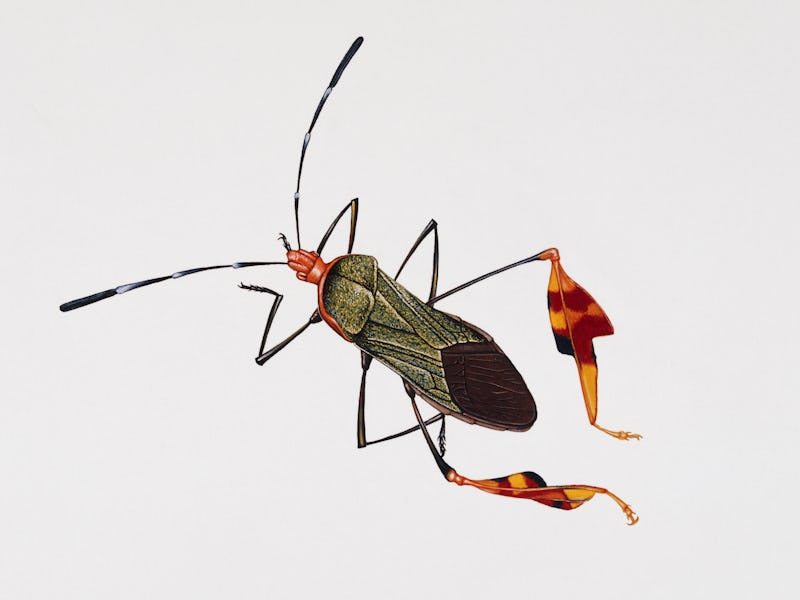A Major Agricultural Pest Hides the Key to Its Survival in Its Poop
The squash bug has to seek out a symbiont. It can only be found in poop.

Squash bugs are the deadbeat parents of the insect world. After they lay their eggs, they pretty much leave the larvae to fend for themselves. If the nymphs ever want to reach a new state of maturity, they need a special something: bacterial symbionts of the Caballeronia genus, which give the insects an immuno-boost and help provide the nutrients they need to survive.
But without a parent to spoonfeed you bites of Caballeronia, what is a squash bug nymph to do? It turns out the little larvae evolved a clever workaround: Squash bugs find poop of members of their own species and eat it, ingesting the symbiont and giving themselves a chance to thrive.
A team of researchers outlined this new theory in a paper published today in Current Biology.
Digging In
While eating poop isn’t all that uncommon in the wild, the whole thing is complicated by the fact that the parents aren’t leaving deposits behind for their larvae to eat later. This means that the baby squash bugs had to somehow seek it out on their own.
Scott Villa, a professor of biology at Davidson College, and co-authors tested out their hypothesis by taking squash bugs and their poop (and some X-factors) and investigating them in a lab setting.
The study, in trying to figure out the attraction to the poop, found a few strange details. The first was that the insects were attracted to the poop of other members of their species, even after it had been sterilized to remove the symbiont. But then the bugs were also attracted to the symbiont when it had been grown in a lab culture.
Then it got weirder: They wouldn’t eat the poop of a species in the Anasa genus of bugs so closely related that the squash bug can mate with them that had the same Caballeronia symbionts. And they had to be force-fed the symbiont if it was derived from that species and separated from that poop, even though the symbiont would trigger the same biological functions.
A squash bug prepares its tasty meal to get that sweet symbiont inside.
So what could be going on? Caballeronia could be leading the nymphs right to it.
“We found that the nymphs still had a significant attraction towards just the symbiont itself, telling us that the symbiont is giving off some sort of signal that says, ‘Hey, I'm here. Look, I'm here. Look at me, come pick me up,’” Villa says. The signaling is done chemically — nymphs that had their antenna removed couldn’t find the symbiont. This also means that evolution saw fit to permanently bring the two together. “If the bacteria are picked up by some bug that they can't live in, then that's a dead end for them. That's no good,” Villa says.
Once the symbiont is obtained, the insects also don’t eat a steady diet of poop. As the name implies, they are more interested in squash. So what’s going on under the hood? Villa says the team just doesn’t have the answers yet — and identifying the chemical messengers is a key part of follow-up studies to come.
This will include investigating what Villa calls “fecal attractive specificity” — the idea that there’s something specific to the symbiont/poop connection.
“They can only pick up the symbiont if it's in their own poop. It's very weird, and so we don't know if they're not attracted to that poop [or] if they're only attracted to their own species' poop, but it's pretty remarkable that you can put them in a cage, and they will basically wither away and die even if their symbiont is available in that case, but if it's encapsulated in the wrong species poop,” he says. The way to test this would be to look to see if the behavior is present across the Anasa genus, or just in the squash bug.
While studying why insects graze a little on their compatriot’s poop seems a little strange, squash bugs are a major agricultural pest, and Villa and colleagues think the secret to effective squash bug pesticides could be hiding somewhere in their droppings. Once the true culprit is found, Villa says, “We can start exploiting this vulnerability and try to figure out methods of pest control that can break this ability of them to find the poop, either by inoculating the soil and getting rid of the microbes themselves or somehow breaking the chemical signal.”